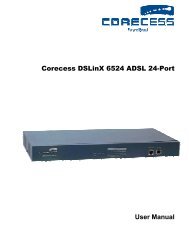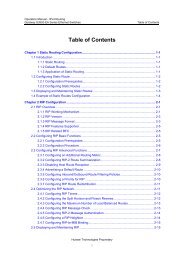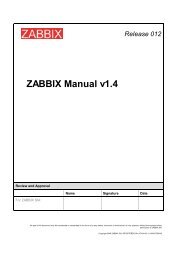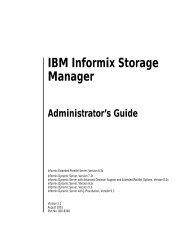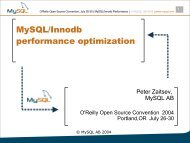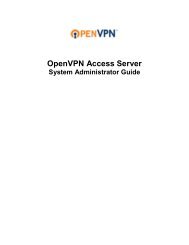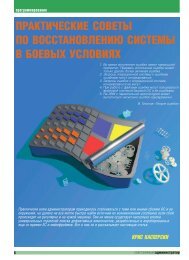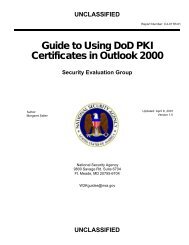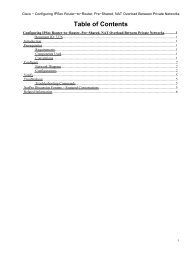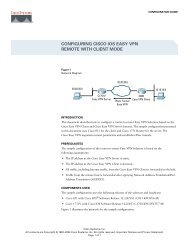Solaris Application Programming, 1/e - Chapter 4 - Parent Directory
Solaris Application Programming, 1/e - Chapter 4 - Parent Directory
Solaris Application Programming, 1/e - Chapter 4 - Parent Directory
Create successful ePaper yourself
Turn your PDF publications into a flip-book with our unique Google optimized e-Paper software.
4.3 TOOLS THAT REPORT CURRENT SYSTEM STATUS 59<br />
STATE: The state of the process, that is, whether it is sleeping, on a CPU (as<br />
the two processes for “martin” are in the example), or waiting for a processor<br />
to run on.<br />
PRI: The priority of the process, which is a measure of how important it is for<br />
CPU time to be allocated to a particular process. The higher the priority, the<br />
more time the kernel will allow the process to be on a CPU.<br />
NICE: The nice value for the process, which allows the user to reduce the priority<br />
of an application to allow other applications to run. The higher the nice<br />
value, the less CPU time will be allocated to it.<br />
TIME: The CPU time that the process has accumulated since it started.<br />
CPU: The percentage of the CPU that the process has recently consumed.<br />
PROCESS/NLWP: The name of the executable, together with the number of<br />
lightweight processes (LWPs) in the process. From <strong>Solaris</strong> 9 onward, LWPs<br />
are equivalent to threads. prstat can also report activity on a per-thread<br />
basis using the -L flag.<br />
You can obtain a more accurate view of system utilization by using the prstat<br />
command with the -m flag. This flag reports processor utilization using microstate<br />
accounting information. Microstate accounting is a more accurate breakdown of<br />
where the process spends its time. <strong>Solaris</strong> 10 collects microstate accounting data<br />
by default. Example 4.14 shows example output from this command.<br />
The columns in Example 4.14 are as follows.<br />
PID: The PID of the process.<br />
Example 4.14 Output from prstat -m<br />
PID USERNAME USR SYS TRP TFL DFL LCK SLP LAT VCX ICX SCL SIG PROCESS/NLWP<br />
1946 martin 0.1 0.3 0.0 0.0 0.0 0.0 100 0.0 23 0 280 0 prstat/1<br />
5063 martin 0.2 0.0 0.0 0.0 0.0 0.0 100 0.0 24 0 95 0 gnome-panel/1<br />
5065 martin 0.2 0.0 0.0 0.0 0.0 0.0 100 0.0 13 0 22 0 nautilus/3<br />
7743 martin 0.1 0.0 0.0 0.0 0.0 0.0 100 0.0 61 0 76 0 soffice1.bin/6<br />
5202 martin 0.0 0.0 0.0 0.0 0.0 0.0 100 0.0 24 2 40 0 gnome-termin/1<br />
...<br />
Total: 115 processes, 207 lwps, load averages: 0.00, 0.01, 0.02<br />
USERNAME: The User ID of the process owner.<br />
USR to LAT: The percentage of time spent by the process in the various modes:<br />
user mode (USR), system mode (SYS), system traps (TRP), text (i.e., program<br />
instruction) page faults (TFL), data page faults (DFL), user locks (LCK),<br />
sleeping (SLP), and waiting for the CPU (LAT).



